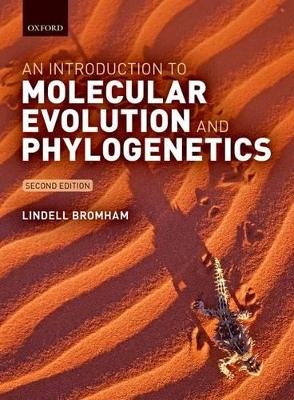
An Introduction to Molecular Evolution and Phylogenetics
Seiten
2016
|
2nd Revised edition
Oxford University Press (Verlag)
978-0-19-873636-3 (ISBN)
Oxford University Press (Verlag)
978-0-19-873636-3 (ISBN)
An Introduction to Molecular Evolution and Phylogenetics offers an engaging yet highly informative narrative to demonstrate how molecular data can be used to answer evolutionary questions.
DNA can be extracted and sequenced from a diverse range of biological samples, providing a vast amount of information about evolution and ecology. The analysis of DNA sequences contributes to evolutionary biology at all levels, from dating the origin of the biological kingdoms to untangling family relationships.
An Introduction to Molecular Evolution and Phylogenetics presents the fundamental concepts and intellectual tools you need to understand how the genome records information about evolutionary past and processes, how that information can be "read", and what kinds of questions we can use that information to answer. Starting with evolutionary principles, and illustrated throughout with biological examples, it is the perfect starting point on the journey to an understanding of the way molecular data is used in modern biology.
Online Resource Centre
The Online Resource Centre features:
For registered adopters of the book:
- Class plans for one-hour hands-on sessions associated with each chapter
- Figures from the textbook to view and download
DNA can be extracted and sequenced from a diverse range of biological samples, providing a vast amount of information about evolution and ecology. The analysis of DNA sequences contributes to evolutionary biology at all levels, from dating the origin of the biological kingdoms to untangling family relationships.
An Introduction to Molecular Evolution and Phylogenetics presents the fundamental concepts and intellectual tools you need to understand how the genome records information about evolutionary past and processes, how that information can be "read", and what kinds of questions we can use that information to answer. Starting with evolutionary principles, and illustrated throughout with biological examples, it is the perfect starting point on the journey to an understanding of the way molecular data is used in modern biology.
Online Resource Centre
The Online Resource Centre features:
For registered adopters of the book:
- Class plans for one-hour hands-on sessions associated with each chapter
- Figures from the textbook to view and download
Lindell Bromham, Professor, Research School of Biology, Australian National University
1. Introduction - The story in DNA ; 2. DNA - The immortal germline ; 3. Mutation - We are all mutants ; 4. Replication - Endless copies ; 5. Genome - Accident and design ; 6. Gene - Making an organism ; 7. Selection - Descent with modification ; 8. Drift - Chance and necessity ; 9. Species - Origin of species ; 10. Alignment - Same but different ; 11. Phylogeny - Tree of life ; 12. Hypotheses - Seeing the wood for the trees ; 13. Rates - Tempo and mode ; 14. Dates - Telling the time
| Erscheint lt. Verlag | 28.1.2016 |
|---|---|
| Zusatzinfo | 425 colour illustrations and photographs |
| Verlagsort | Oxford |
| Sprache | englisch |
| Maße | 203 x 266 mm |
| Gewicht | 1109 g |
| Themenwelt | Informatik ► Weitere Themen ► Bioinformatik |
| Naturwissenschaften ► Biologie ► Evolution | |
| Naturwissenschaften ► Biologie ► Genetik / Molekularbiologie | |
| ISBN-10 | 0-19-873636-3 / 0198736363 |
| ISBN-13 | 978-0-19-873636-3 / 9780198736363 |
| Zustand | Neuware |
| Haben Sie eine Frage zum Produkt? |
Mehr entdecken
aus dem Bereich
aus dem Bereich
Internationale statistische Klassifikation der Krankheiten und …
Buch | Softcover (2023)
Deutscher Ärzteverlag
CHF 34,95
Operationen- und Prozedurenschlüssel; Internationale Klassifikation …
Buch | Softcover (2023)
Deutscher Ärzteverlag
CHF 34,95


